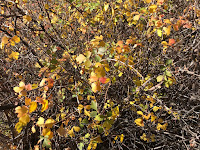 |
In this blog post, I outline a little information on some of the more common carnivorous plants which you may be more likely to encounter in a garden nursery. At the end of the post I have also included links to information on less ‘fussy’ and more resilient plants that will just grow and be happy in a wide array of indoor environments, no doting required.
Along the way, I will be providing plenty of links to further reading for a variety of these topics.
Carnivorous
Plants
But even indoors, they need a little extra care. As a kid, I always wondered why the mighty Venus Flytraps I purchased would die within a week. One problem is that I was treating them like quasi houseplant-animals rather than specialized organisms which needed time to acclimate. I wanted to see them eat bugs, but what they needed was time… and likely for me to stop poking them every 10 minutes.
Carnivorous plants have evolved to flourish in environments which are very low in accessible nutrients (low in Nitrogen and minerals salts, for example). But these plants do not primarily get their sustenance from their living meals; rather, they convert light into sugars (via chloroplasts) like all plants. They capture and 'process' their prey to compensate for their low-nutrient environments – it's like they take supplements in the form of digested insects! It’s a method to obtain a few specific things here and there but not a primary means for the plants to obtain energy. Also, don’t feed them raw meat.
Before diving in, an amazing list of detailed
recommendations for the cultivation of various carnivorous plants may be found
here: https://www.carnivorousplants.
Venus Flytraps (Dionaea muscipula)
 |
| Venus Flytrap - Dionaea muscipula James Henderson, Golden Delight Honey, Bugwood.org |
More information on the Venus Fly trap:
- https://www.ndsu.edu/pubweb/
chiwonlee/plsc211/student% 20papers/articles02/dhodgson/ dhodgson.html - https://www.uaex.edu/yard-
garden/resource-library/plant- week/venus-flytrap-2-24-06. aspx
Sundews (Drosera spp.)
 |
Sundew - Drosera spp.Rob Routledge, Sault College, Bugwood.org |
-
Interesting to note that there do exist some questions for why the genus has such varied coloration, more information on that can be found here:
http://blogs.evergreen.edu/
pim-group1/drosera-capensis/ -
More general information on Sundews here:
https://mlbs.virginia.edu/
organism/drosera_rotundifolia
Pitcher Plants (varied)
This group encompasses multiple genera of similar plants.
 |
Darlingtonia californica - California Pitcher PlantHarlan B. Herbert, Bugwood.org |
The pitcher plant Darlingtonia californica (aka. California Pitcher Plant) is native to Oregon and California. True to their namesake, these plants grow in a pitcher-like form. An insect will find itself drawn into the pitcher, fall into a small pool of water at its base, and then struggle to escape due to various possible plant adaptations (for example, some species have smooth and slick pitcher walls, others have downward pointing hairs or small spines). The water at the base of these plants is often enhanced with digestive enzymes, and nutrients are absorbed through the walls of the plant at the base of the pitcher. The California Pitcher plant has a twist in its pitcher to help retain prey, it is also somewhat unique in that it relies on bacteria and microinvertebrates to help breakdown trapped insects.
 |
| Darlingtonia californica - California Pitcher Plant Harlan B. Herbert, Bugwood.org |
- Additional
reading on the California Pitcherplant:
http://online.sfsu.edu/
bholzman/courses/Fall01% 20projects/pitcherplant.htm
 |
| Nepenthes Pitcher Plant |
|
- https://www.uaex.edu/yard-
garden/resource-library/plant- week/Nepenthes-Pitcher-Plant- 09-16-2016.aspx - https://www.uwb.edu/wetlands/plants/nepenthes-carunculata
- https://jhgreenhouse.biology.
indiana.edu/features/ carnivores/Nepenthes-sp.html
If you’re interested in learning more about the kind you can just "give water and they’ll grow", then I highly recommend you check out the following few links:
-
Great selection guide:
https://extension.umd.edu/
hgic/topics/selecting-indoor- plants - More
information plant-by-plant:
https://planttalk.colostate.
edu/topics/houseplants/ - More
information on succulents:
https://planttalk.colostate.
edu/topics/houseplants/1329- succulents/ - Brief
about some benefits of
houseplants:https://cals.
arizona.edu/yavapai/anr/hort/ byg/archive/houseplantsi
mproveindoorairquality2015.html
A short Afterward
These curious carnivores are pretty cool, unfortunately many species are threatened, endangered, and some critically so, due to poaching, habitat destruction, and so forth. There do exist licensed vendors for these plants. And so if you are interested in trying to grow one of these curious terrors, do a little investigation and please make sure you are getting your exotic plants from a reputable source.
And as always,
Best of luck in your gardening endeavors!

























